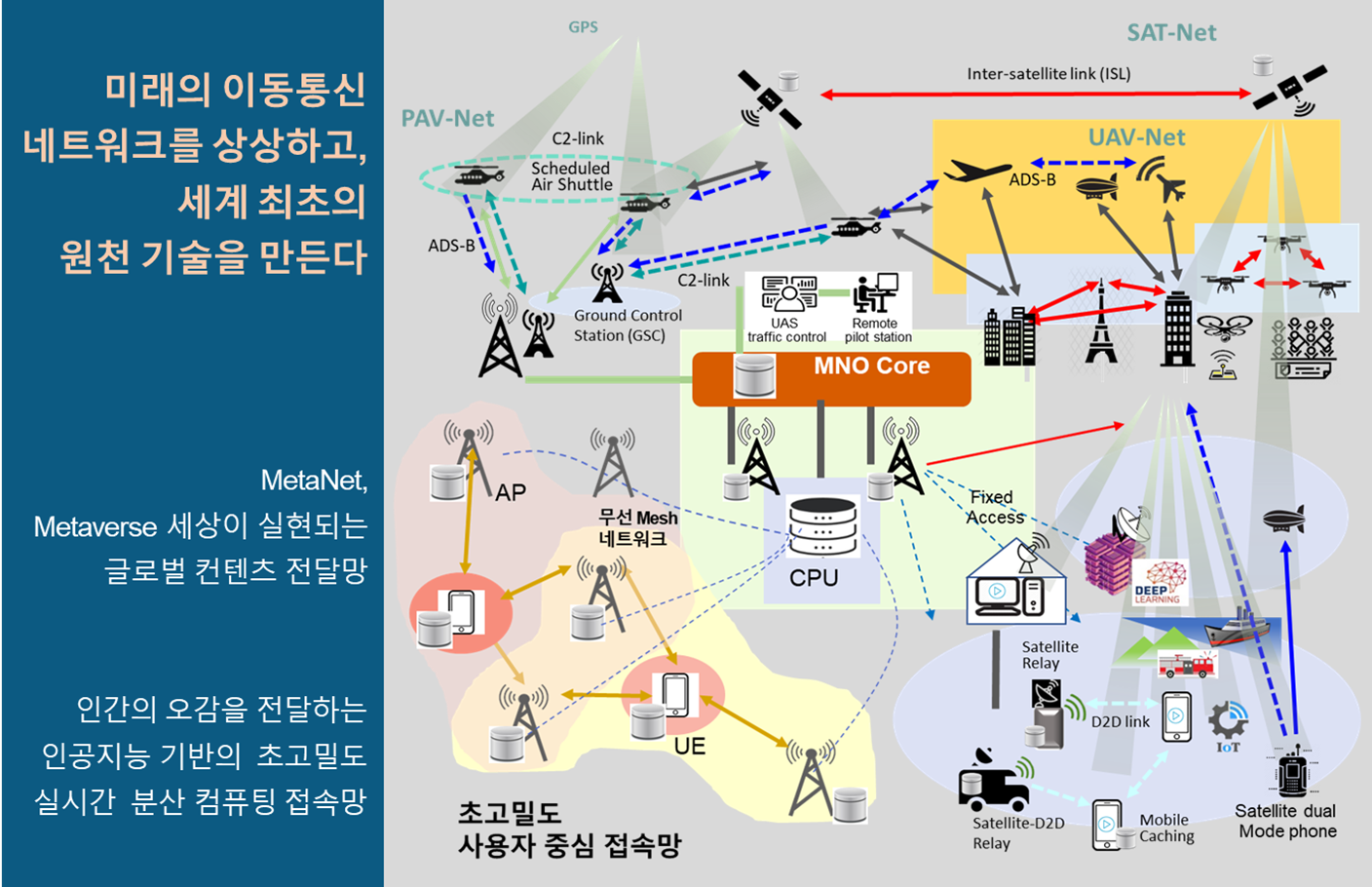
RESEARCHResearch in Progress
6G Mobile System Design & Optimization
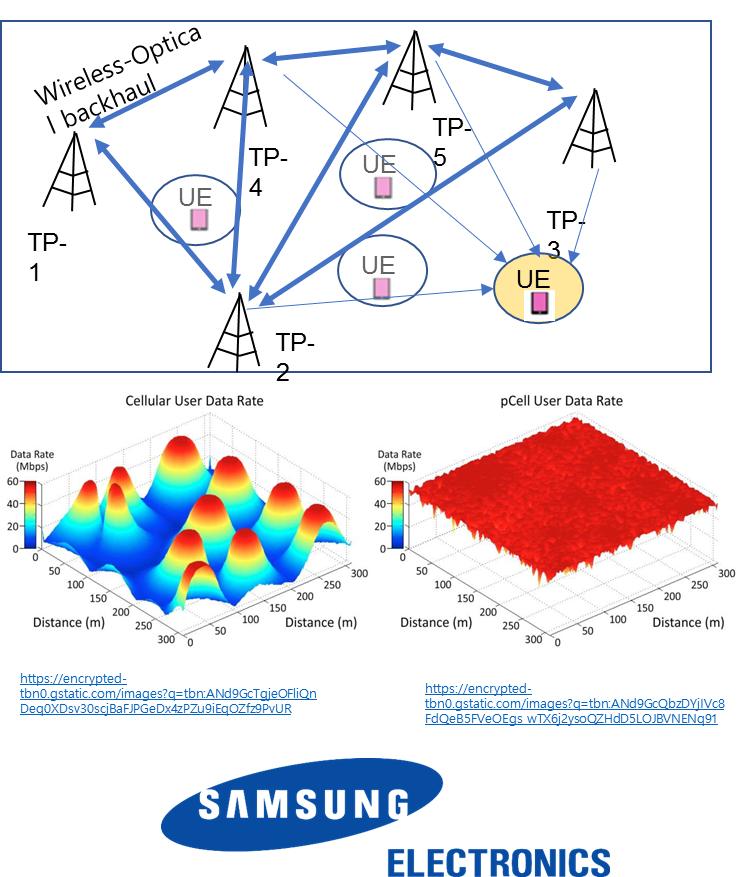
We are expecting the commercial 5G service available in 2019. It means that our research community already has been one step ahead, now start talking about 6G.
This project investigates the promising technologies for 6G System Design & Optimization with the goal of boosting Network Capacity. The capacity increase can be due to more spectrum, more spectral efficiency or more spatial efficiency. What will be the target peak data rate and bandwidth efficiency in 6G? Maybe 1Tbps or more? How about 1Gbps user experienced data rate?
Multiple Access techniques, e.g. NOMA, FTN-based MIMO transmission, Multi-Antenna Technologies, such as Massive MIMO, Symbol-level precoding, Spatial Modulation, Interference Alignment & Cancellation, User-centric Coverage techniques, e.g., Distributed Input Distributed Output (aka massive CoMP), pCell Clustering, and Tera-hertz Band Communication like One-bit Quantization & Faster-than-Nyquist (FTN) are some of the directions to be researched for the capacity boost.
Everything is open now, so we do not know what it will look like, but we will join the frontline to take shape for 6G.
Mobile Caching Network (MoCANet) for 6G or Beyond
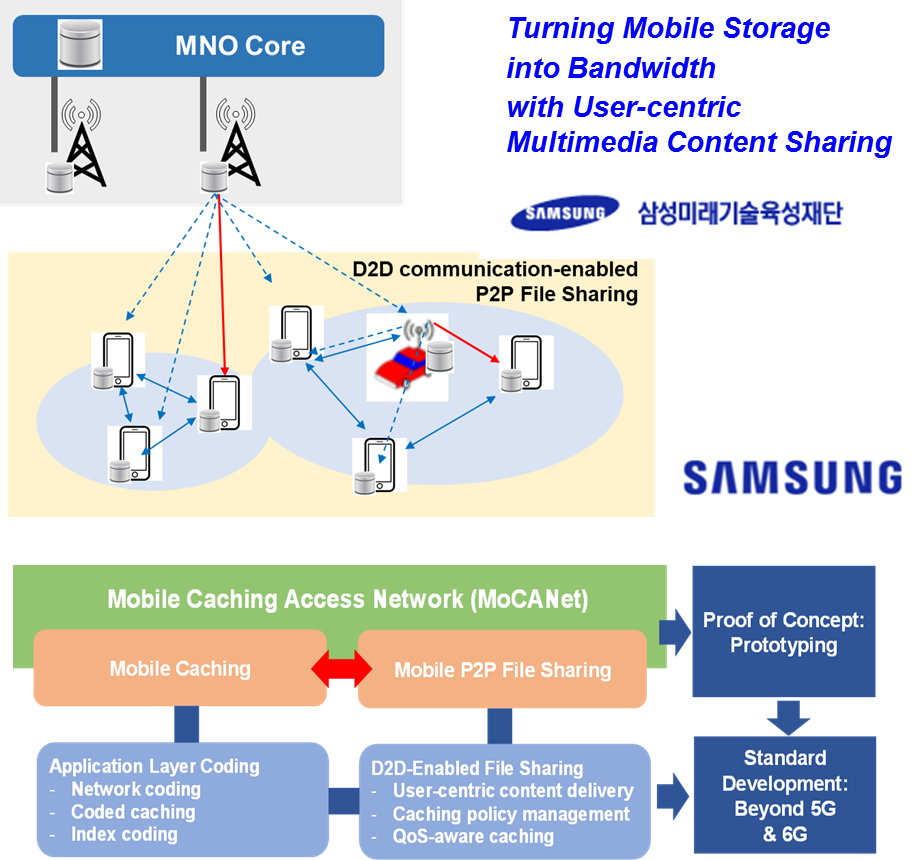
According to recent research, it is forecast that at least a 100x network capacity increase will be required to meet the mobile traffic demands in 2020. Moreover, mobile video streaming will account for 72% of the overall mobile data traffic. In order to meet the mobile traffic demands in future, it is essential to change current wireless communication paradigm which is heavily relying on bandwidth to meet capacity requirement. MoCANet (Wireless Caching Access Network) is a new wireless communication network which can increase the capacity of network by minimizing unnecessary wireless transmissions by using storage of terminal without relying on increase of wireless bandwidth. The UEs efficiently process arbitrary signals received in the periphery to selectively store necessary contents with a mutually cooperative and distributed storage technique for sharing a large amount of contents with a limited storage capacity of UEs. Our projects aims at design of MoCANet architecture and system modeling, development of key networking technologies, global standard development to be evolved into beyond 5G & 6G and implementation of a prototype system.
Application of Deep Learning to Communication System Design & Optimization
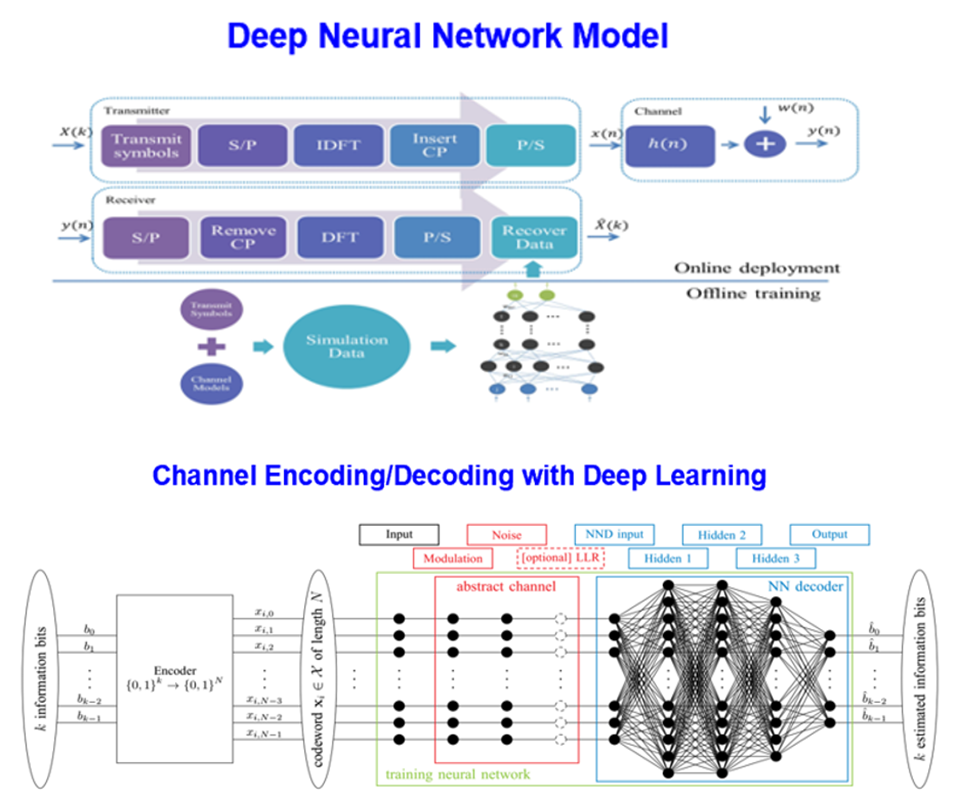
Following the success of Deep Learning (DL) in other domains, efforts to incorporate DL techniques to physical layer communication, in particular, are being carried out recently. In this regard, the research interests can roughly be categorized into two, i.e. End-to-End Design approach and Augmenting the existing algorithms with DL. Our lab aims to study how DL techniques can be incorporated to system design and optimization for 5G & Beyond 5G technologies.
Motivated by the DARPA Spectrum Collaboration Challenge(SC2), which is a collaborative machine-learning competition, our lab aims to investigate a new and more efficient wireless paradigm in which radio networks automatically collaborate to dynamically determine how spectrum should be used in adaptive manner, instead of the current rigid and exclusively licensed bands.
Massive Connectivity and Low-latency Communication for Industrial IoT
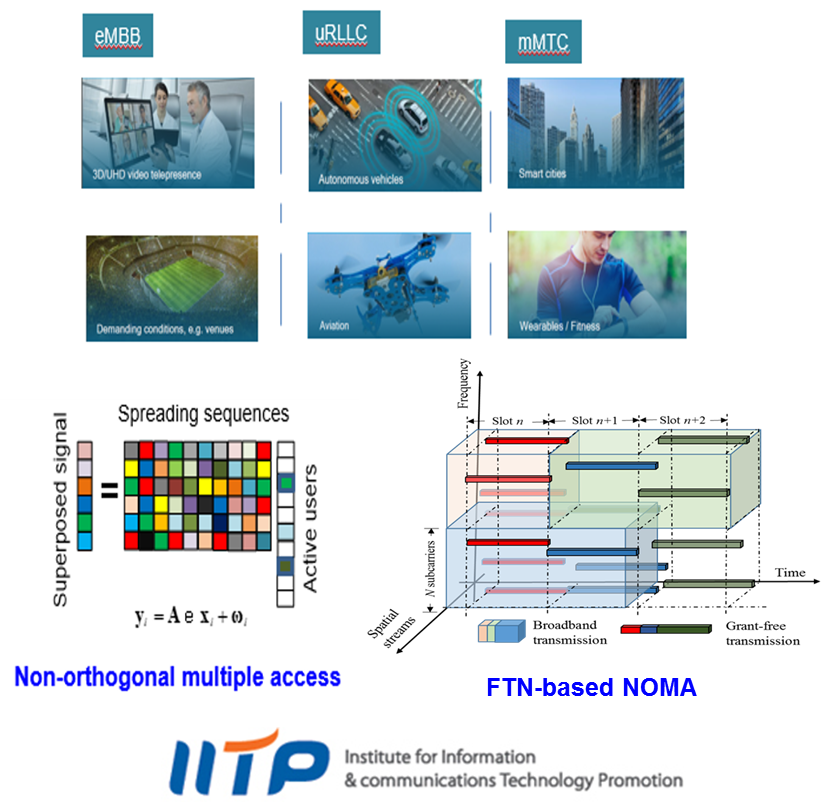
Radio access design for fifth generation (5G) mobile communications is diverse, and has seemingly contradictory requirements, ranging from high spectral efficiency in enhanced mobile broadband (eMBB) communications to sub-millisecond radio access latency in ultra-reliable and low latency communication (uRLLC), in addition to support of massive connectivity in machine-type communication (mMTC). With the envisioned adoption of machine-type communication, such as in auto-generated software update/reconfiguration, network command, and mobile autonomous reporting (MAR) in the Internet of Things (IoTs), new random and medium access techniques should be considered. Aiming at providing immediate channel access, grant-free random access (GF-RA), in which users transmit data, including control signaling in a single shot, without waiting for radio resource assignment, has received significant attention in recent years. Our objective in this project, is to design a grant-free random access GF-RA, including one shot channel estimation and synchronization, which supports massive connectivity while reducing access delay time and control signal overhead. Our-approach includes non-orthogonal multiple access (NOMA)-based channel access, compressive-sensing based joint channel-estimation, synchronization and multi-user detection.
Open/Modular/Flexible System-level Simulator for 5G New Radio Network
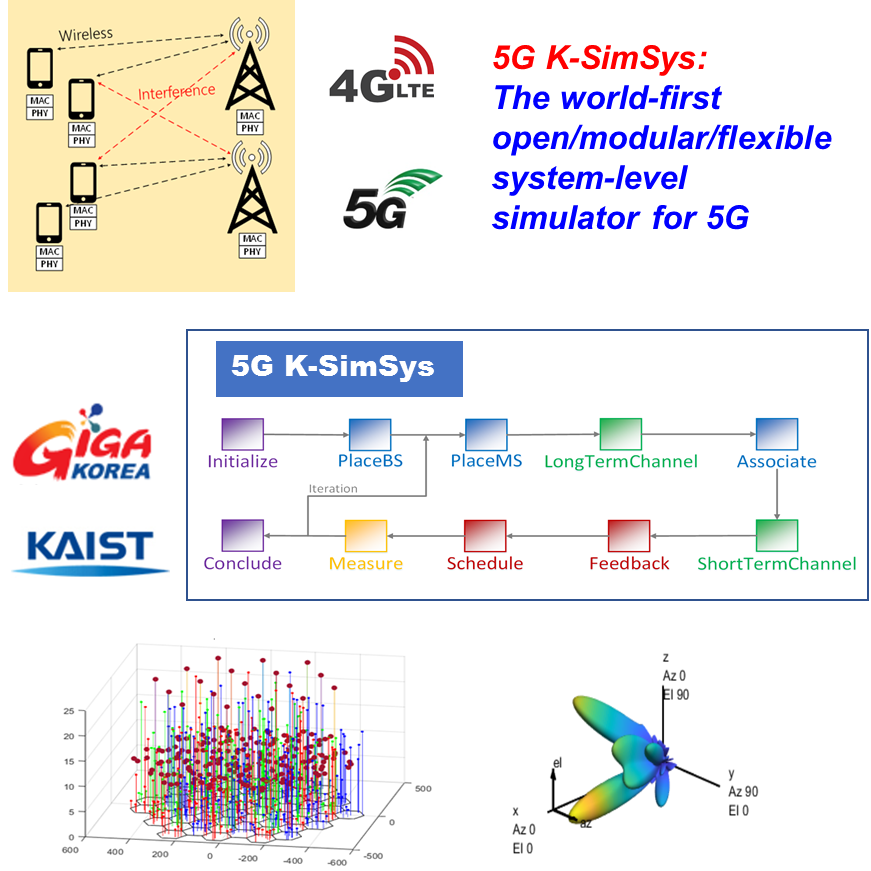
For research and development for mobile communication schemes and specification designs, a variety of system level simulators suitable for purpose and usage are required. For example, the 5G mobile communication system has three service scenarios for eMBB, mMTC, and URLLC and eight Key Performance Indicators (KPI) to support them. It also has various types of network configurations and channel models with different frequency bands. Therefore, a simulator for verifying such various systems require the following two features. First, it should support the reusability of the simulator. The reusability of the simulator can be supported through the library of functions that are used repeatedly. When the simulator's library is designed with modular concept, the user of the system level simulator can construct their simulator in an efficient way. Second, it should support the flexibility of using simulators. The simulator should be designed to be intuitive so that users can expect flexible use. This requires documentation on the simulator and readability of the completed code. It can also support by modular design. To satisfy these requirements, we will develop open, modular and flexible simulator with hierarchical structures and modular design and we will also verify various 5G mobile communication systems by the simulator.
Massive MIMO
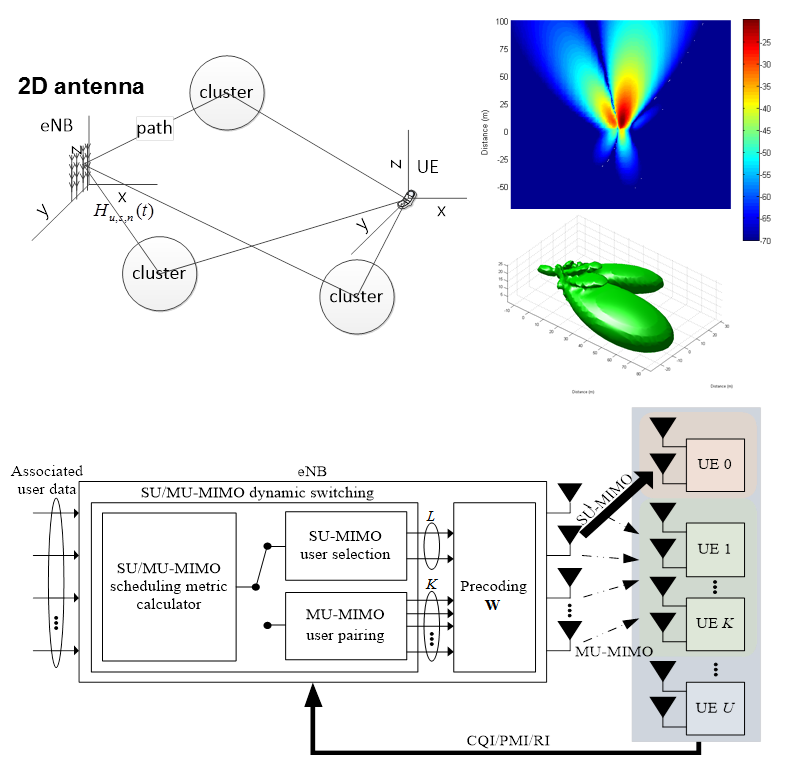
Massive MIMO is a multi-user MIMO technology where each base station (BS) with a very large number of antenna elements serves a large number of user terminals simultaneously over the same time and frequency band. In this project, we first attempt to verify a performance of under a practical system configuration with a 3D channel model in various radio environments. Toward this ends, we have implemented an system-level simulator for full dimension MIMO subject to the standard 3D channel model. After fully investigating its performance, we will be providing the experimental ground to optimize the feedback scheme while identifying the design constraints for a massive MIMO system. Our ultimate goal will be to explore the technical possibility of achieving the average bandwidth efficiency of 10bps/Hz, as demanded in 5G system, only with the antenna technologies.
Unlicensed Spectrum Access and Sharing Technologies for 5G System
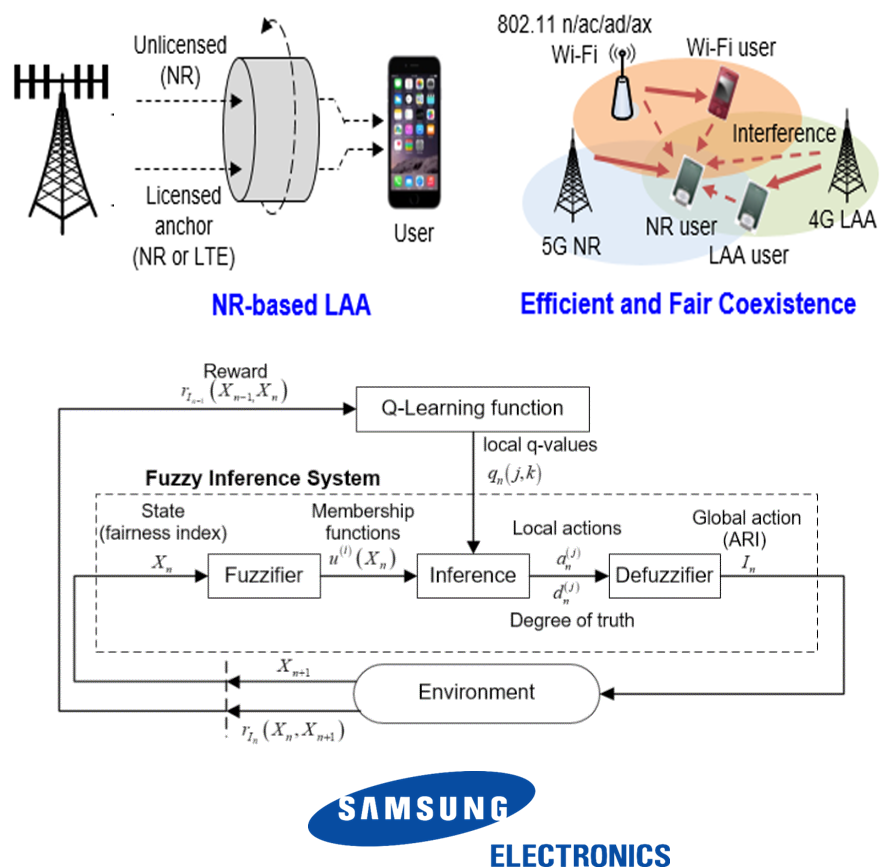
Recently, a study item on NR-based unlicensed access (NR-U) was approved by 3GPP in march 2017. NR-U, with underlying unlicensed band CCs with wider bandwidth (e.g., 80 or 100MHz), will also reduce the implementation complexity for both eNB and UE, compared to carriers of smaller bandwidth, when moving to address larger amount of spectrum, something that we consider inevitable for those scenarios where multi-Gbps data rates need to be achieved. In line with NR development and in order to maximize the applicability of NR-U, beneficial studying solutions applicable to sub-6GHz and above 6GHz unlicensed bands (e.g., 37/60GHz) is considered. In the same vein, this study looks into scenarios and solutions where NR-LAA is anchored to a legacy LTE carrier by dual-connectivity (DC) similar to the NSA mode of regular NR operation, as well as CA-based aggregation with a 5G NR anchor. Furthermore, standalone operation is also considered. Our project focus to secure IPR and develop the key elements for PHY/MAC/RRM layers in the 5G NR-U. In addition, we aim to 5G unlicensed band sharing technique for ensuring the coexistence among various homogeneous/heterogeneous systems in the below and above-6GHz unlicensed bands.

